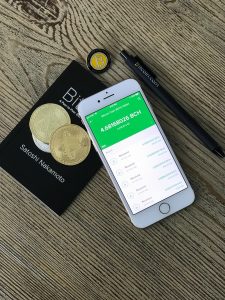Oil is one of the most important commodities in the world, and it is traded in various markets, including the foreign exchange market. Trading oil on forex can be an effective way to diversify your investment portfolio and potentially earn profits. In this article, we will explain how to trade oil on forex.
What is Oil Trading?
Oil trading is the buying and selling of crude oil or petroleum products, such as gasoline, diesel, and jet fuel. The oil market is extremely volatile and is affected by various factors, including political instability, supply and demand, weather conditions, and global economic conditions.
Trading oil on forex involves speculating on the price movements of oil, rather than actually buying or selling physical oil. Forex traders can trade oil through contracts for difference (CFDs), which are financial derivatives that allow you to trade the price movements of oil without owning the underlying asset.
How to Trade Oil on Forex
Here are the steps to follow to trade oil on forex:
Step 1: Choose a Forex Broker
The first step in trading oil on forex is to choose a forex broker that offers oil trading. You can find many forex brokers online that offer oil trading, but you should choose a reputable and regulated broker with competitive spreads and leverage.
Step 2: Open an Account and Deposit Funds
Once you have chosen a forex broker, the next step is to open an account with them and deposit funds. Most forex brokers offer different account types with varying minimum deposit requirements, so choose an account that suits your trading needs and budget.
Step 3: Choose an Oil Trading Instrument
Forex brokers offer different oil trading instruments, such as Brent crude oil, West Texas Intermediate (WTI) crude oil, and Heating Oil. Choose an oil trading instrument that you are comfortable trading and that offers good liquidity.
Step 4: Analyze the Market
Before trading oil on forex, you need to analyze the market and identify potential trading opportunities. You can use technical analysis, fundamental analysis, or a combination of both to analyze the market.
Technical analysis involves using charts and technical indicators to identify patterns and trends in the price movements of oil. Fundamental analysis involves analyzing economic and geopolitical factors that affect the oil market, such as supply and demand, political tensions, and weather conditions.
Step 5: Place Your Trade
Once you have analyzed the market and identified a potential trading opportunity, it’s time to place your trade. You can buy or sell oil CFDs based on your analysis and trading strategy.
If you believe that the price of oil will rise, you can buy oil CFDs, and if you believe that the price of oil will fall, you can sell oil CFDs. Make sure to set your stop-loss and take-profit levels to manage your risk and potential profits.
Step 6: Monitor Your Trade
Once you have placed your trade, you need to monitor it closely to ensure that it’s performing as expected. You can use trading tools and indicators provided by your forex broker to monitor your trade and adjust your stop-loss and take-profit levels as necessary.
Conclusion
Trading oil on forex can be a profitable way to diversify your investment portfolio and potentially earn profits. To trade oil on forex, you need to choose a reputable forex broker, open an account, choose an oil trading instrument, analyze the market, place your trade, and monitor it closely. Always remember to manage your risk and potential profits by setting your stop-loss and take-profit levels.





